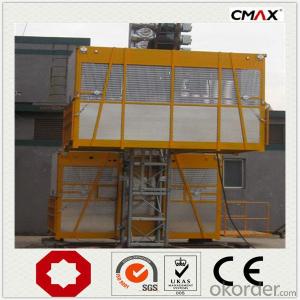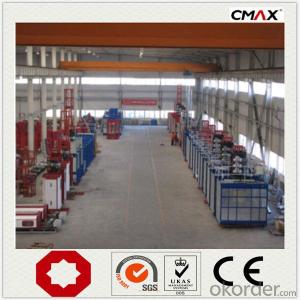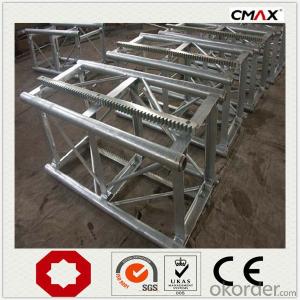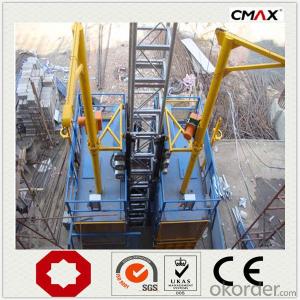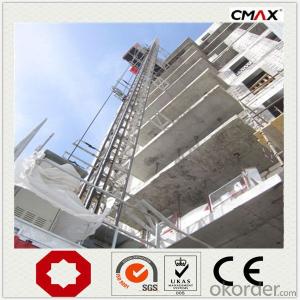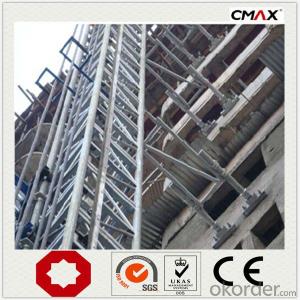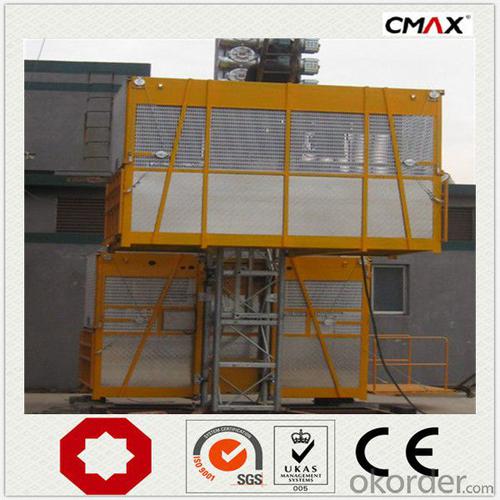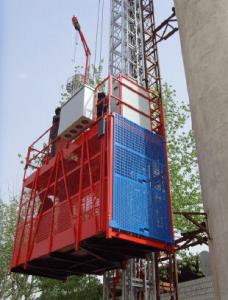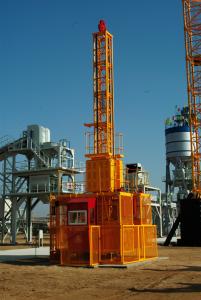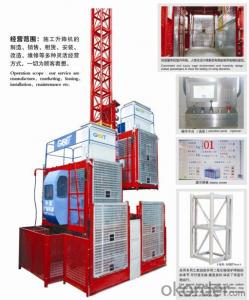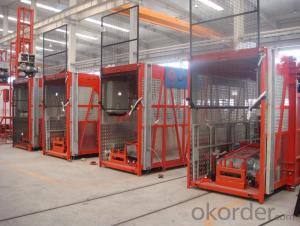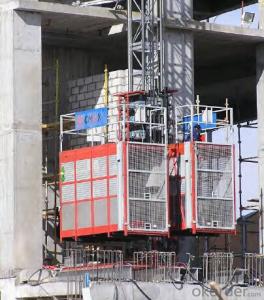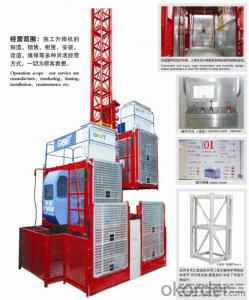Construction Hoist Lifting Elevater for Project
- Loading Port:
- China main port
- Payment Terms:
- TT OR LC
- Min Order Qty:
- 1 unit
- Supply Capability:
- 100 unit/month
OKorder Service Pledge
OKorder Financial Service
You Might Also Like
Structure of Construction Hoist Description
The general building hoist manufactured by our company have the features as good quality, long life, wide application range and convenient for maintenance. The electric parts adopt products from worl renowned manufacturers such as Schneider, Siemes, and LG. The racks and pinion adopts specal material and heat-treatment technique, which prolong the life of these parts. The steel structure uses quality steel from famous domestic manufacturers. The surface of the structure can apply paint-spray, parkerizing baking finish or hot galvanizing processing according to users requirments. The cage can be produced and decorated by aluminum molded board, punched-plate or figured aluminum board.
Main Features of Construction Hoist
1. The recomended cage dimension(L*W*H)(m): 2.0*1.0*2.5, 2.5*1.0*2.5, 2.5*1.3*2.5, 3.0*1.5*2,5, 3.2*1.5*2.5, 3.8*1.5*2.5, 4.0*1.5*2.5, 4.2*1.5*2.5 etc. We can also manufacture cages of other size according to the user.
2. The cage and the door material can be aluminum molded board, punched-plate, figured aluminum board or other type according to yout requirements.
3. The mast section and the tie-in surface can adopt paint-spray, or hot galvanizing processing..
Construction Hoist Specifiction
SC series product also has special design, such as reinforced guide rail with cross-section of 800mm, inclined type, special for cooling tower, etc. All the double cage building hoist can be changed into single cage type,
| Type | Payload(kg) | Lifting Speed (m/min) | Motor Power(kw) | Safety Device | ||
| Twin Cage Hoist | No Counterweight | SC100/100 | 2*1000 | 33 | 2*2*11 | 2*SAJ30-1.2 |
| SC120/120 | 2*1200 | 33 | 2*2*11 | 2*SAJ30-1.2 | ||
| SC160/160 | 2*1600 | 33 | 2*2*11 | 2*SAJ30-1.2 | ||
| SC200/200 | 2*2000 | 33 | 2*3*11 | 2*SAJ40-1.2 | ||
| SC250/250 | 2*2500 | 33 | 2*3*11 | 2*SAJ50-1.2 | ||
| SC270/270 | 2*2700 | 33 | 2*3*15 | 2*SAJ50-1.2 | ||
| SC300/300 | 2*3000 | 33 | 2*3*15 | 2*SAJ50-1.2 | ||
| SC320/320 | 2*3200 | 33 | 2*3*15 | 2*SAJ50-1.2 | ||
| With Counterweight | SCD200/200 | 2*2000 | 33 | 2*2*11 | 2*SAJ40-1.2 | |
| SCD250/250 | 2*2500 | 33 | 2*2*11 | 2*SAJ50-1.2 | ||
| SCD270/270 | 2*2700 | 33 | 2*2*15 | 2*SAJ50-1.2 | ||
| SCD300/300 | 2*3000 | 33 | 2*2*15 | 2*SAJ50-1.2 | ||
| SCD320/320 | 2*3200 | 33 | 2*2*15 | 2*SAJ50-1.2 |
Images of Construction Hoist
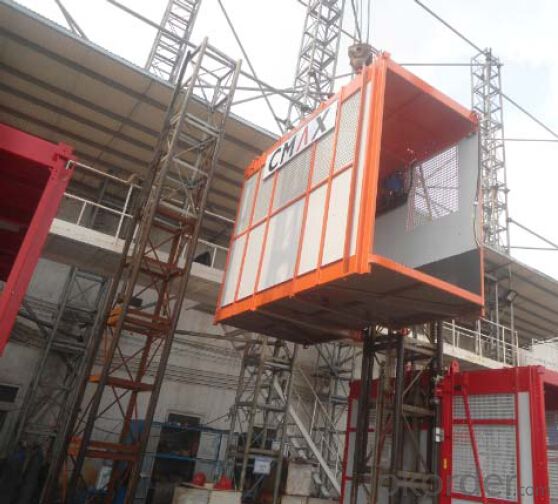
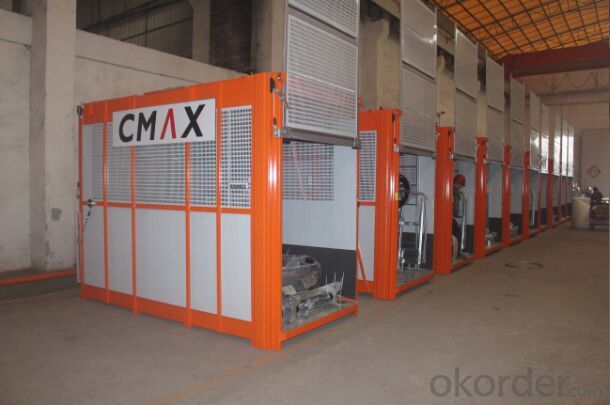
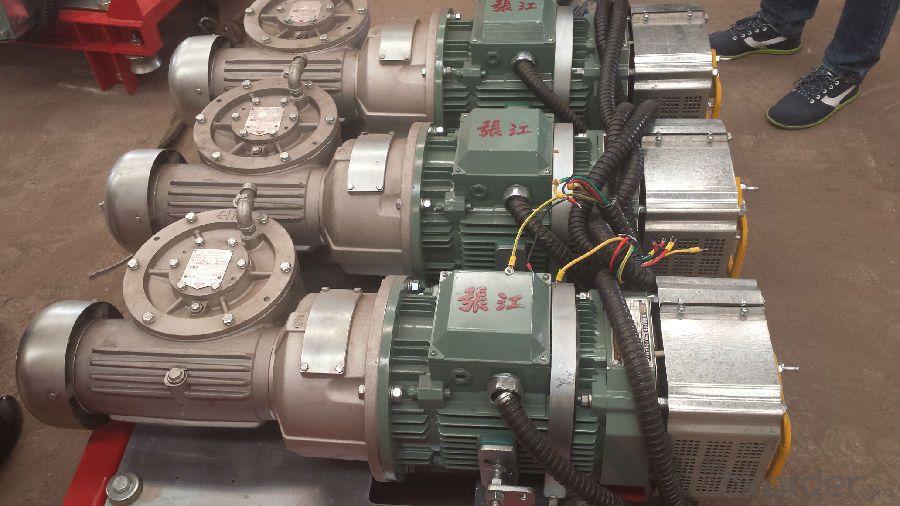
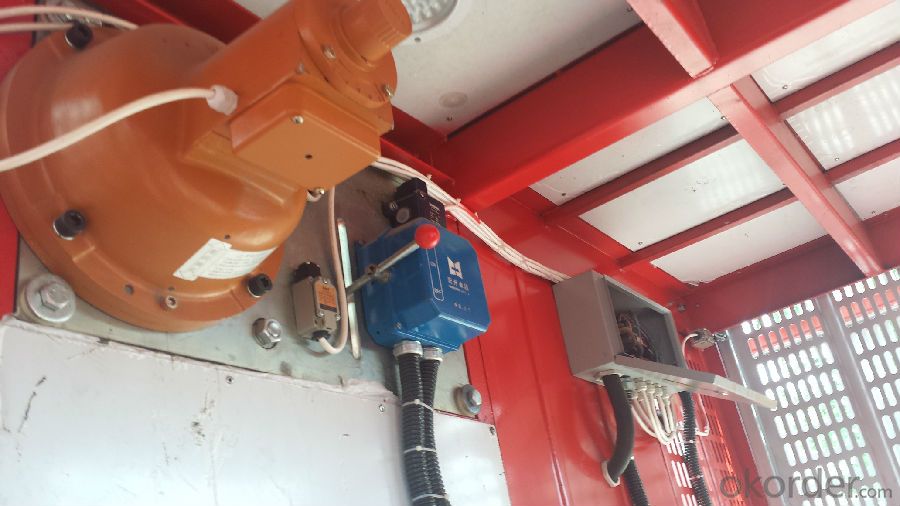
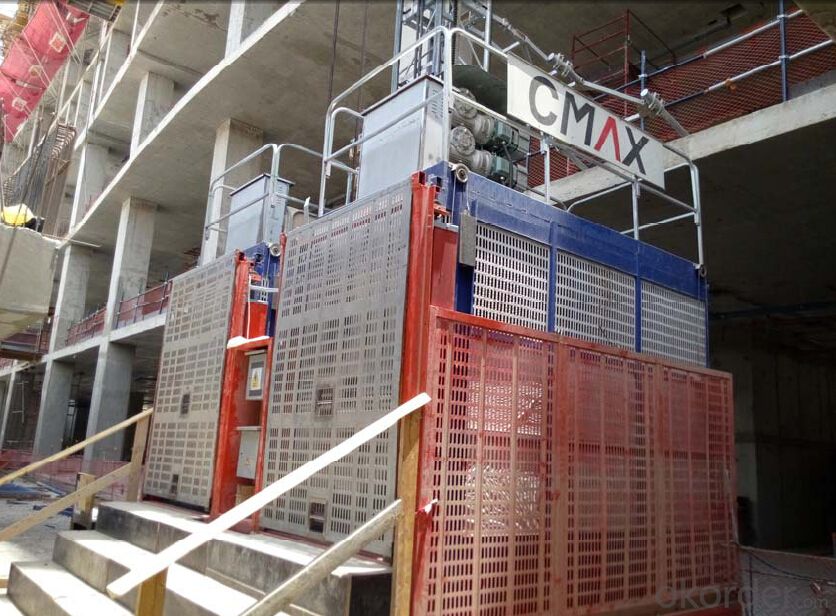
FAQ of Construction Hoist
Q: What is the building hoist main purpose?
A: Building hoist equipped with double or single cabin to transport the materials and labors up and down. It's the ideal
construction equipment for vertical transportation in the field of construction.
Q: What is the main structure of building hoist?
A: The P/M construction hoist mainly contains metal structure, driving system, electrical control system, cable guide & protection system, electrical top crane and safety device.
Q: What is the meaning of the building hoist’s code?
A: Take SC200/200 for example: “SC” stands for rack and pinion hoist, “200/200” stands for double cage and capacity is 2 tons per cage. “SC200” stands for single cage and capacity is 2 tons.
Q: What is the dimension of the cage?
A: Normally the cage dimension is 3X1.5X2.5M (L/W/H) for 2t type hoist. Details should be checked according to our quotation sheet. Also, the size can be customized according to the factual site condition. There are two doors (entrance& exit doors) for each cage, It can be produced as up & down sliding or ramping model for safety and convenience.
- Q: The user is inquiring about the possibility of purchasing a second-hand construction hoist.
- <p>Yes, you can buy a used building hoist. Many companies specialize in selling refurbished or used construction equipment, including building hoists. You can find them through online marketplaces, auction sites, or by contacting construction equipment dealers directly. It's important to inspect the hoist for any damages or wear and ensure it meets safety standards before purchase. Additionally, consider the hoist's age, maintenance history, and any warranties that might still be valid.</p>
- Q: This question asks about the typical issues encountered with lifting devices and seeks advice on how to prevent these problems.
- <p>Common problems with lifting devices include mechanical failure, overloading, improper use, and lack of maintenance. To avoid these issues, ensure regular inspections and maintenance, follow the manufacturer's guidelines for weight limits, and train operators on proper use. Additionally, implement safety protocols, such as load testing and visual inspections before each use, and consider using lifting devices with safety features like overload protection and limit switches.</p>
- Q: Is it possible to use a building hoist to lift multiple items simultaneously?
- <p>Yes, a building hoist can be used for lifting multiple objects at once, provided that the combined weight of the objects does not exceed the hoist's load capacity. It's important to ensure that the hoist is designed for such use and that safety precautions are strictly followed to prevent accidents. The objects should be secured properly to avoid any shifting during the lift, and the operation should be conducted by trained personnel to maintain safety standards.</p>
- Q: This question asks for an explanation on how to operate a winch, specifically in the context of a building hoist.
- <p>To use a winch, particularly a building hoist, follow these steps: Ensure the winch is securely anchored and the cable is in good condition. Attach the load to the hook, ensuring it's balanced. Turn the winch handle clockwise to lift the load; counterclockwise to lower it. Always keep tension on the cable to prevent it from slacking. Use a tag line to guide the load horizontally. Never exceed the winch's load limit. Regularly inspect the winch and cable for wear and tear. Always have a spotter to assist and communicate during the operation. Safety is paramount, so never leave the winch unattended while the load is in the air.</p>
- Q: What specific regulations or conditions must be met when utilizing lifting equipment in construction or factory environments?
- <p>Yes, there are special requirements for using lifting equipment in construction sites and factories. These include adherence to safety regulations, regular maintenance and inspection, proper operator training, and ensuring the equipment is suitable for the task. Compliance with local and national laws such as OSHA in the U.S. or CE marking in the EU is crucial. Equipment must be certified safe for use, and operators must be licensed and follow safety protocols. Additionally, load capacities must be respected, and lifting operations must be planned and supervised to prevent accidents.</p>
- Q: Is it possible to utilize a building hoist to relocate an entire house?
- <p>No, using a building hoist to move a house is not feasible. Building hoists are designed for vertical transportation of materials and personnel within a building, not for moving entire structures. The weight and structural integrity of a house would be too much for a hoist to handle. Additionally, the process of moving a house typically involves specialized equipment and techniques like those used in house lifting and skidding, which are very different from the operations of a building hoist.</p>
- Q: This question asks for guidance on selecting appropriate lifting equipment based on specific requirements and work conditions.
- <p>To choose the right type of lifting equipment for your specific needs and work environment, consider the following: 1. Load capacity: Ensure the equipment can handle the weight of the items you need to lift. 2. Workspace: Evaluate the size and layout of your work area to determine the appropriate size and type of equipment. 3. Safety features: Look for equipment with safety features that meet your industry's standards. 4. Mobility: Consider whether you need a mobile or stationary unit. 5. Compatibility: Ensure the equipment is compatible with other tools or machinery you use. 6. Budget: Determine your budget and find equipment that offers the best value for your investment. 7. Consult with experts: Speak with equipment manufacturers or distributors to get their recommendations based on your specific needs. Always prioritize safety and efficiency when selecting lifting equipment.</p>
- Q: Whether the construction elevator is a dual-purpose elevator
- The construction elevator is being operated on; And a person's elevator is automatically controlled; The construction elevator is directed by the rack, which is seen in the rack, and the noise is large. The escalator is not a rack, it is usually guided, and the rails are invisible. Construction elevators are rudimentary; And the elevator is complicated.
- Q: This question asks whether a building hoist can be used in both indoor and outdoor construction settings.
- <p>Yes, a building hoist can be used both indoors and outdoors for construction work. These hoists are versatile and designed to facilitate the movement of materials and personnel in multi-story buildings. Outdoors, they are often used during the construction of high-rise buildings, while indoors, they can be used for the vertical transportation of materials in large structures like shopping malls or office buildings. It's important to ensure that the hoist is suitable for the specific conditions, such as weather resistance for outdoor use, and that safety protocols are strictly followed to prevent accidents.</p>
- Q: This question asks for a guide on how to properly and effectively install lifting equipment to ensure safety and efficiency.
- <p>To install lifting equipment safely and efficiently, follow these steps: 1. Ensure the equipment is suitable for the load and environment. 2. Check all safety features and documentation. 3. Position the equipment on a stable, level surface. 4. Follow the manufacturer's installation guide precisely. 5. Conduct a thorough inspection before operation. 6. Train operators on safe usage. 7. Regularly maintain and inspect the equipment. Remember, safety is paramount, and adherence to guidelines is crucial to prevent accidents and ensure efficient operation.</p>
Send your message to us
Construction Hoist Lifting Elevater for Project
- Loading Port:
- China main port
- Payment Terms:
- TT OR LC
- Min Order Qty:
- 1 unit
- Supply Capability:
- 100 unit/month
OKorder Service Pledge
OKorder Financial Service
Similar products
Hot products
Hot Searches
Related keywords
